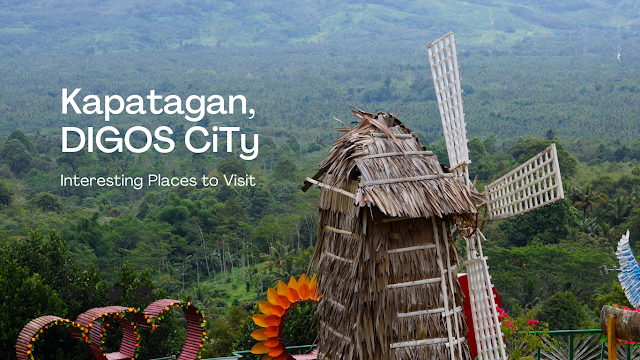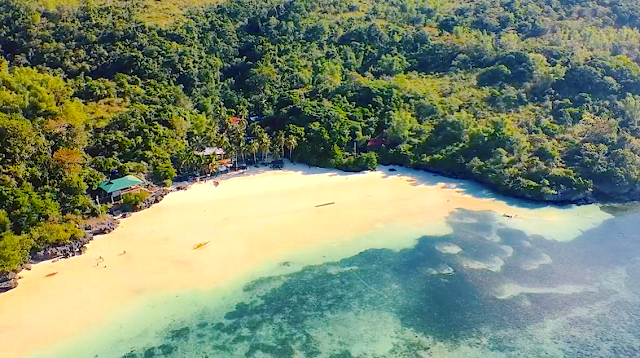Hinabangan, Samar
Hinabangan, officially the Municipality of Hinabangan, is a 4th class municipality located in Samar, Philippines. With a population of 13,693 people as of the 2020 census, it may seem like a small town, but it holds immense historical and cultural significance in the region.
The Origin of Hinabangan
The town's name comes from the Waray word “hinabangan,” meaning "help" or "aid," symbolizing the community’s long-standing tradition of mutual assistance and bayanihan. Originally a sitio of the Municipality of Wright, Hinabangan gradually grew in both size and population. In 1948, it officially became a municipality, incorporating the neighboring Concord district.
Geography and Barangays
Hinabangan spans a land area of 41,802 hectares and is divided into two sectors by the National Highway. The first sector, known as the Hinabangan district, leads to Tacloban City, while the second sector, the Bagacay district, leads toward Eastern Samar. The town is politically subdivided into 21 barangays, including Bagacay, Malihao, and Concord, each contributing to the municipality's rich culture and natural resources.
Natural Attractions and Tourism
Hinabangan is home to several natural tourist spots that showcase its scenic beauty. One of its most popular destinations is the **Binobucalan Falls**, which features a spring of pristine, refreshing water. The **Yabon Falls** and **Tayud Falls** also offer visitors a glimpse of the town's natural beauty, while the **Native House Spring Place** in Barangay Malihao is a newly developed pool surrounded by bamboo houses, perfect for relaxation.
For those seeking adventure, the **NILEA Clear Spring Water** in Barangay Mugdo offers a tranquil yet exciting experience with its cold, clear waters. These natural springs and pools provide not just recreational activities for locals and tourists but also serve as a source of pride for the town.
Rich in Natural Resources
Hinabangan is blessed with abundant natural resources, including gold, silver, aluminum ore, manganese, and sulfur deposits. Its forested area, covering 23,811 hectares, has historically contributed to the local economy through logging activities before the logging ban. Additionally, the town's geography and climate are ideal for agriculture, allowing farmers to grow rice, root crops, and vegetables.
Economic Activities: Tabu and Market Culture
A unique feature of Hinabangan's economy is the "tabu," a local market day where farmers and fisherfolk from surrounding barangays gather to sell their produce, such as fresh fish, fruits, and root crops. The **tabu** not only supports the local economy but also strengthens the community spirit, as people from nearby towns come to Hinabangan to trade and socialize.
Infrastructure and Development
Hinabangan has made significant progress in infrastructure development over the years. The town's strategic location along the National Highway has spurred the growth of transportation and trade, helping to boost the local economy.
Educational Institutions
Education plays an essential role in the development of Hinabangan. The municipality boasts 19 public primary and elementary schools, including Bagacay Elementary School and Concord Elementary School. It also has two high schools: Bagacay National High School and Hinabangan National High School. These institutions provide education to the youth and contribute to the town’s development.
Cansolabao: A Barangay with Historical Significance
One of Hinabangan's notable barangays is **Cansolabao**, which is situated southeast of the town. Cansolabao was established as a separate barangay in 1970 and has a rich history dating back to its origins as a hunting ground for early settlers. With a land area of 640 hectares, Cansolabao is known for its agricultural activities and scenic spots like Cansolabao Creek. The barangay is also home to valuable mineral deposits, including coal, copper, and gold.
Bagacay: A Legacy of Copper Mining
Another significant barangay in Hinabangan is **Bagacay**, historically associated with the discovery of copper. In the early 1950s, a small, seemingly insignificant rock found in Bagacay led to the establishment of a major mining operation by the Marinduque Mining Industrial Corporation (MMIC). The discovery attracted migrants from all over the Philippines, helping Bagacay grow into a bustling community. Today, Bagacay remains an essential part of Hinabangan's economy and culture, celebrating its annual feast day in honor of St. Anthony of Padua.
Marching Towards a Bright Future
Hinabangan is a town deeply rooted in its traditions and history, but it also looks forward to future growth. With its natural resources, scenic spots, and community-driven economy, the municipality has the potential to become a vibrant hub for tourism and agriculture in Samar. As infrastructure projects continue to improve connectivity and market access, Hinabangan's path towards progress remains bright and hopeful.








